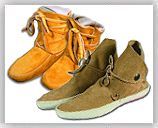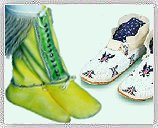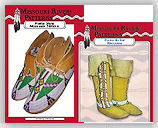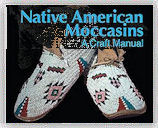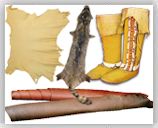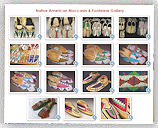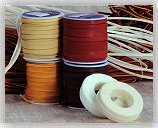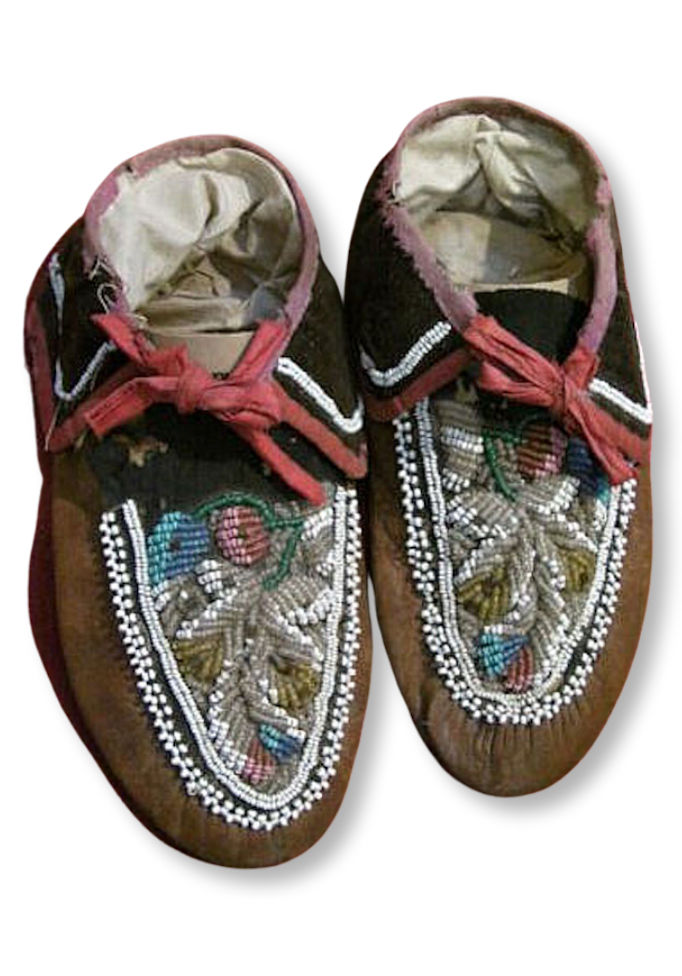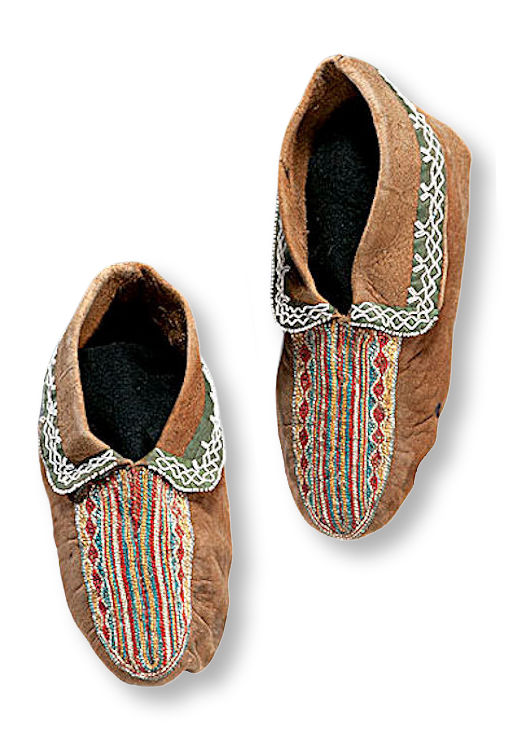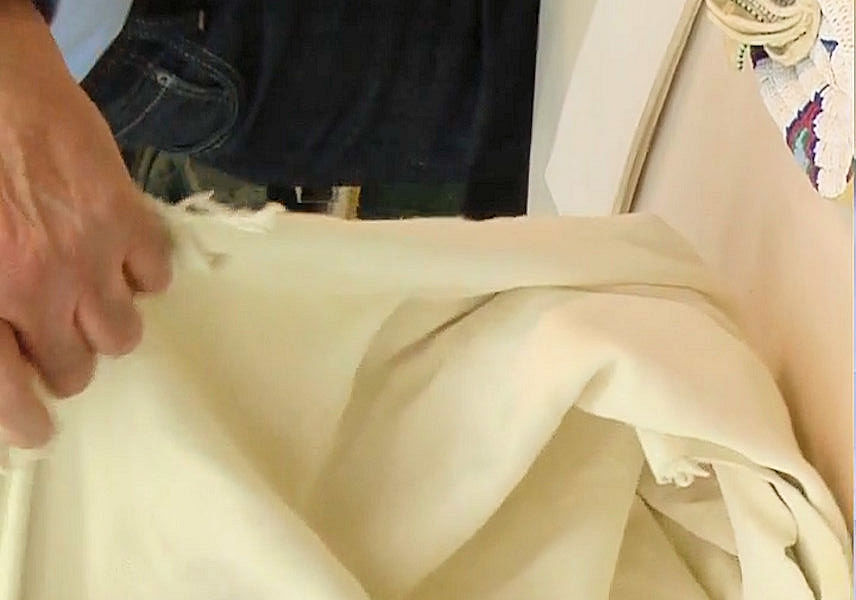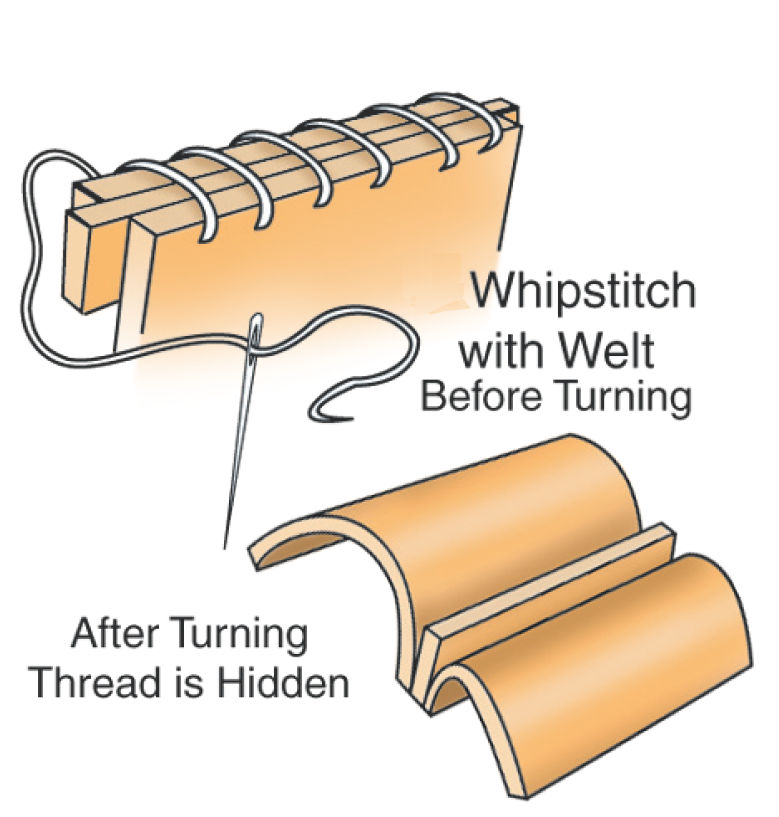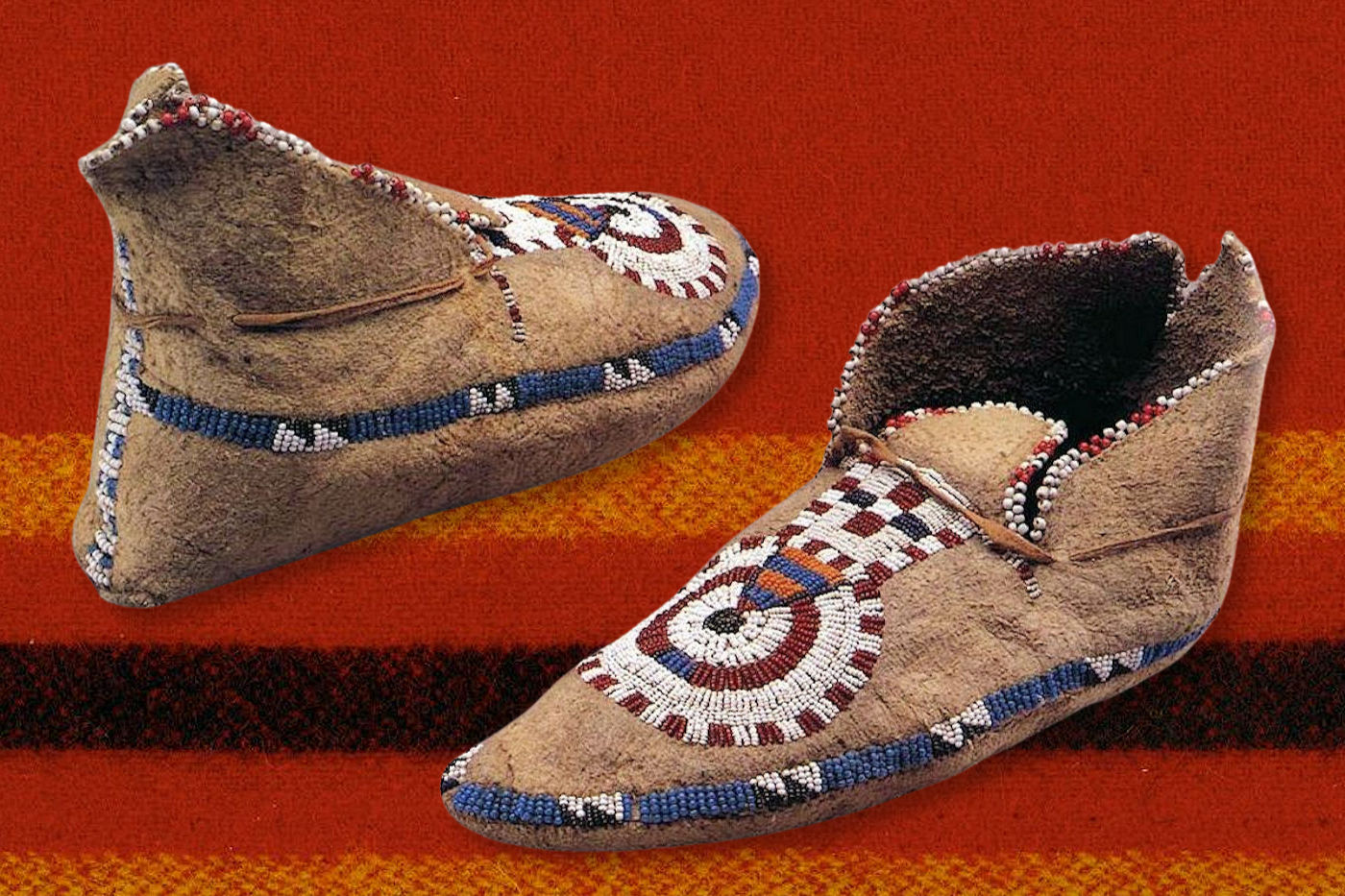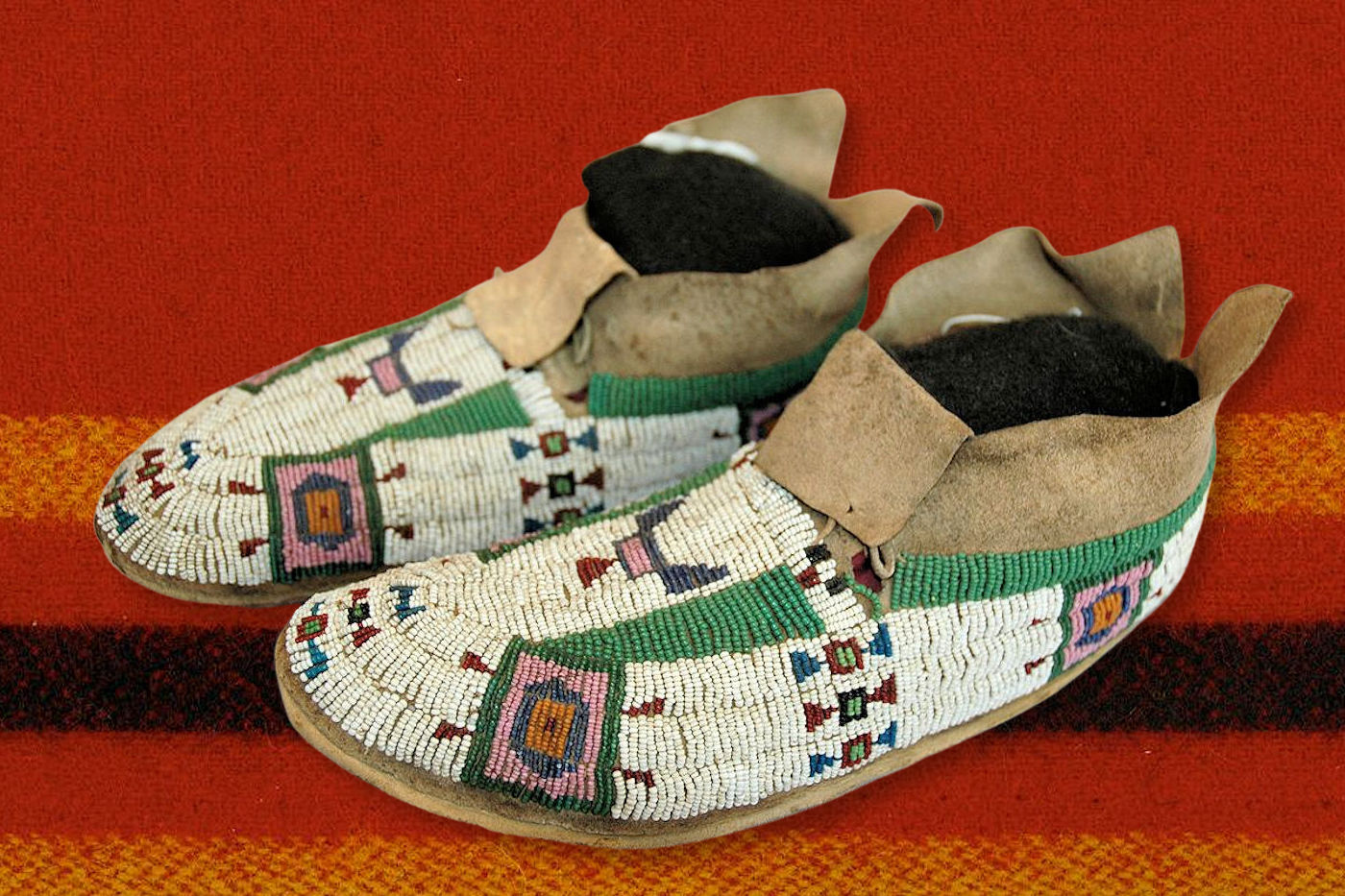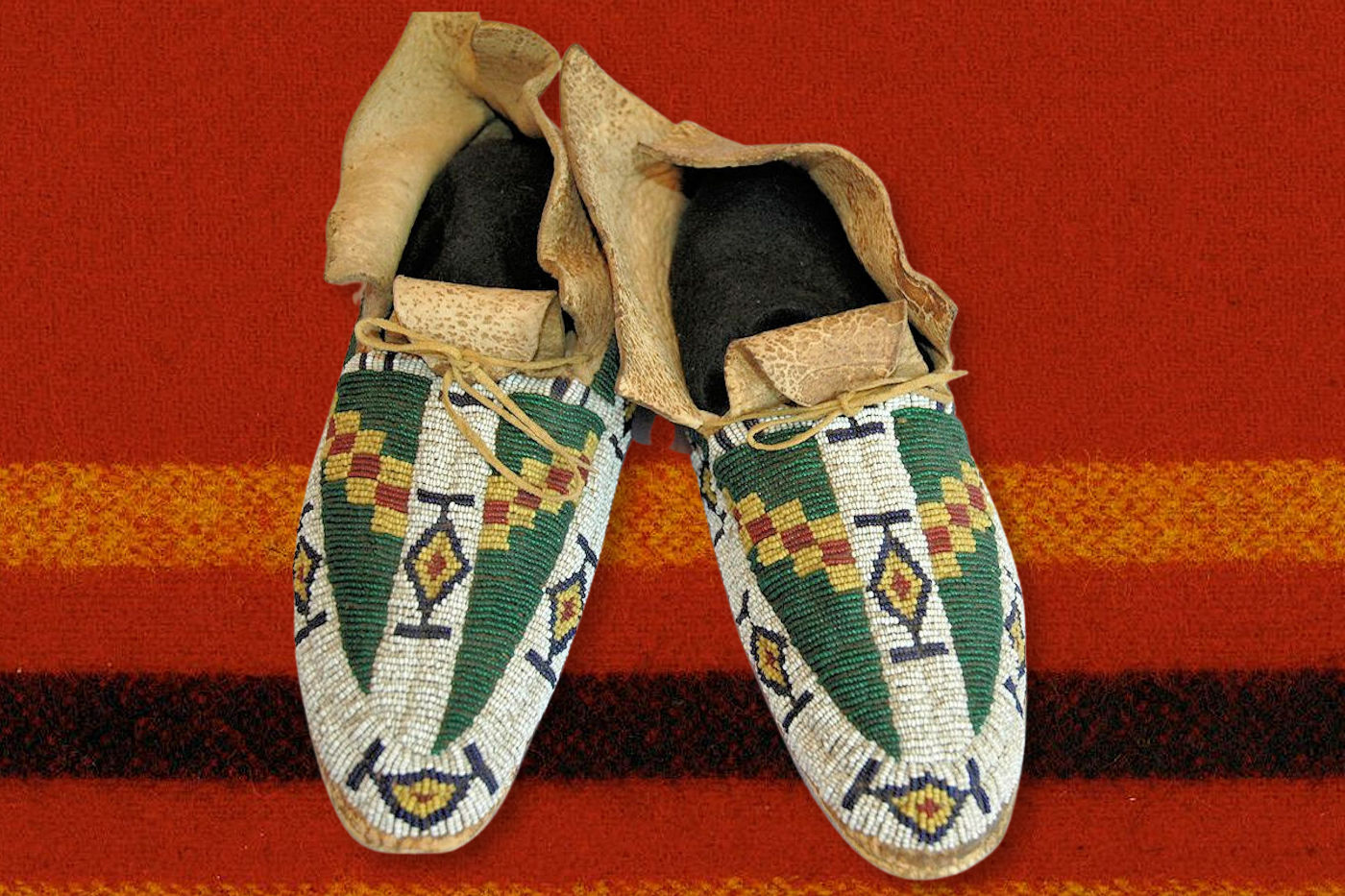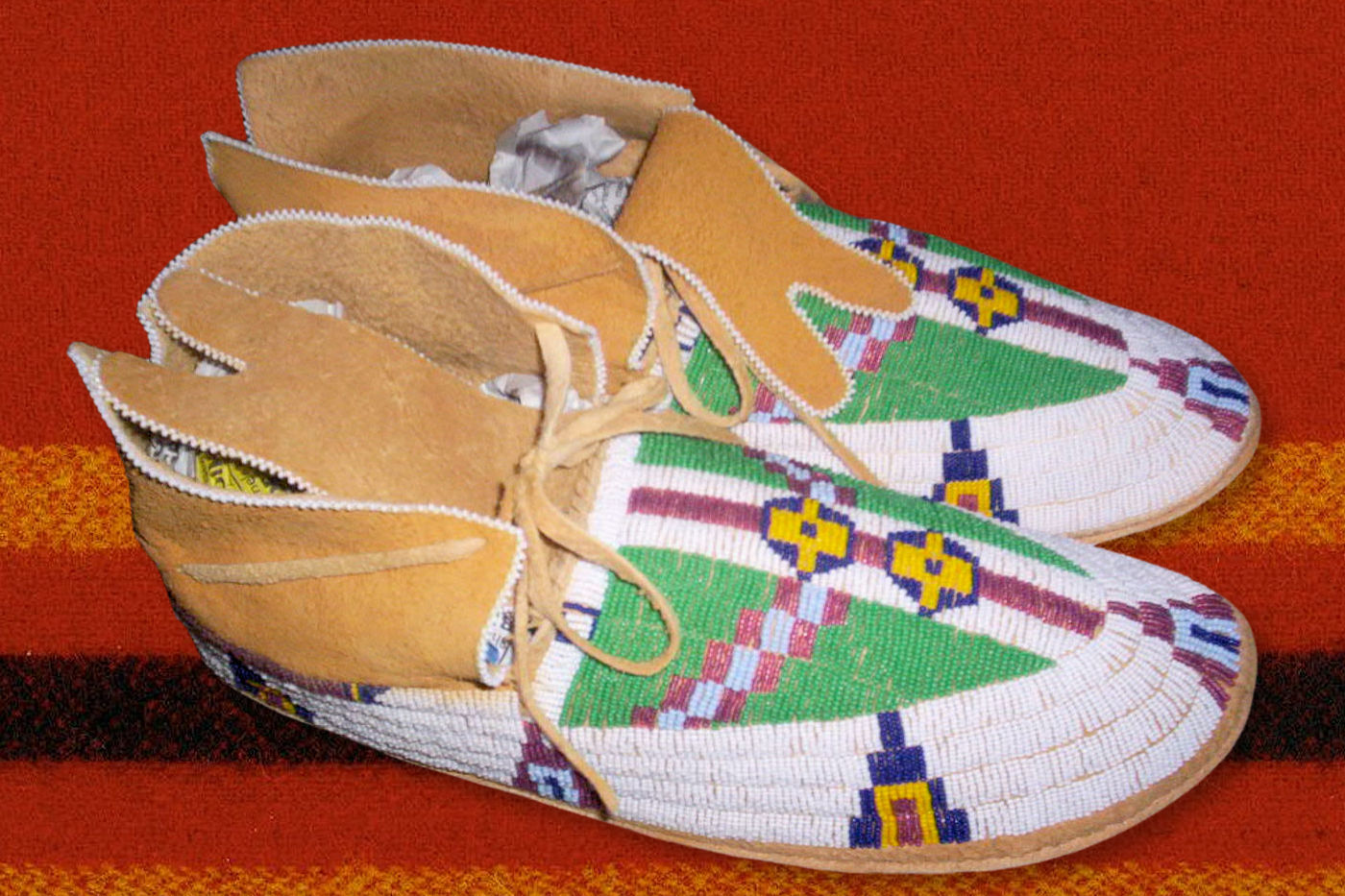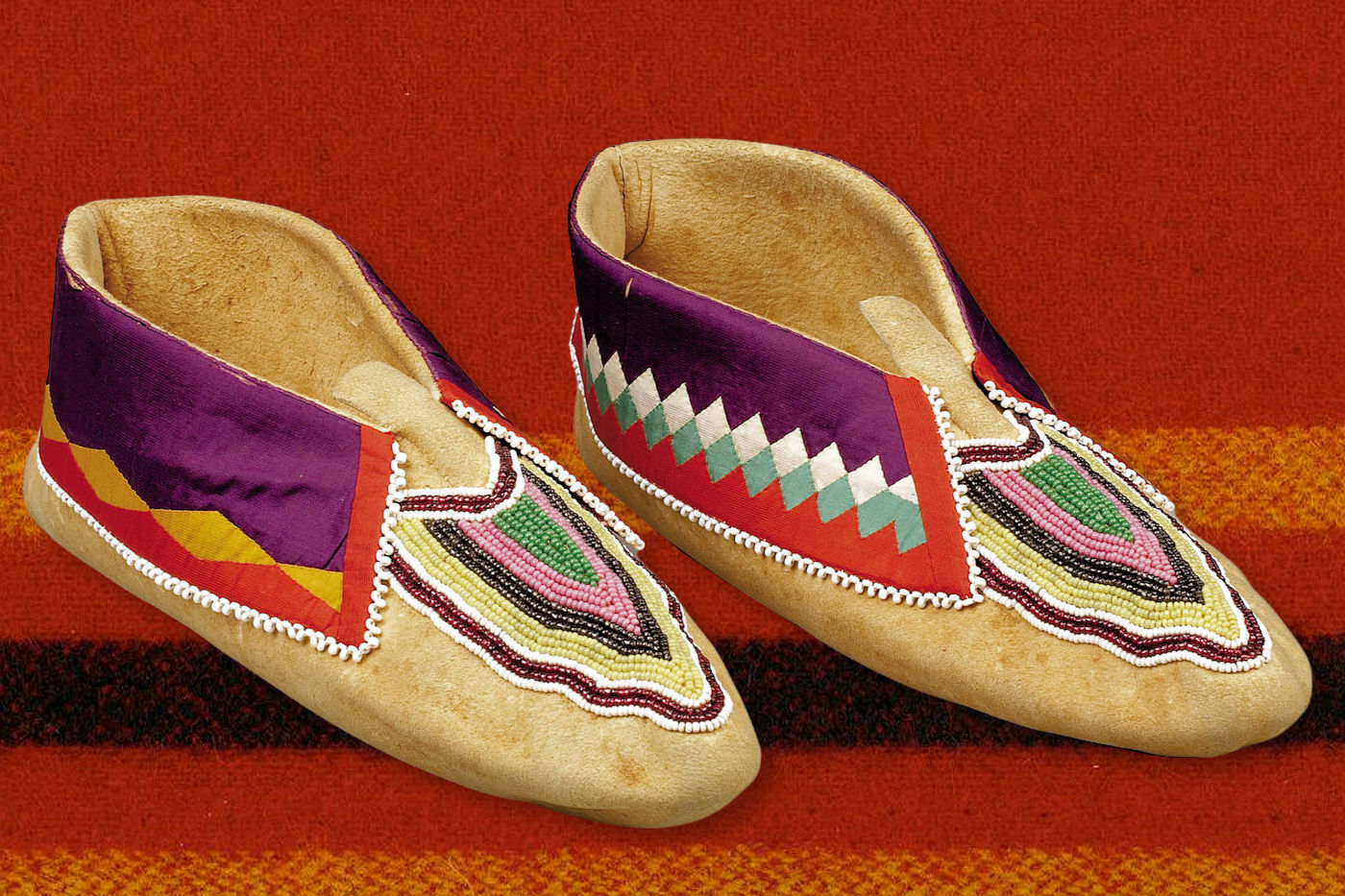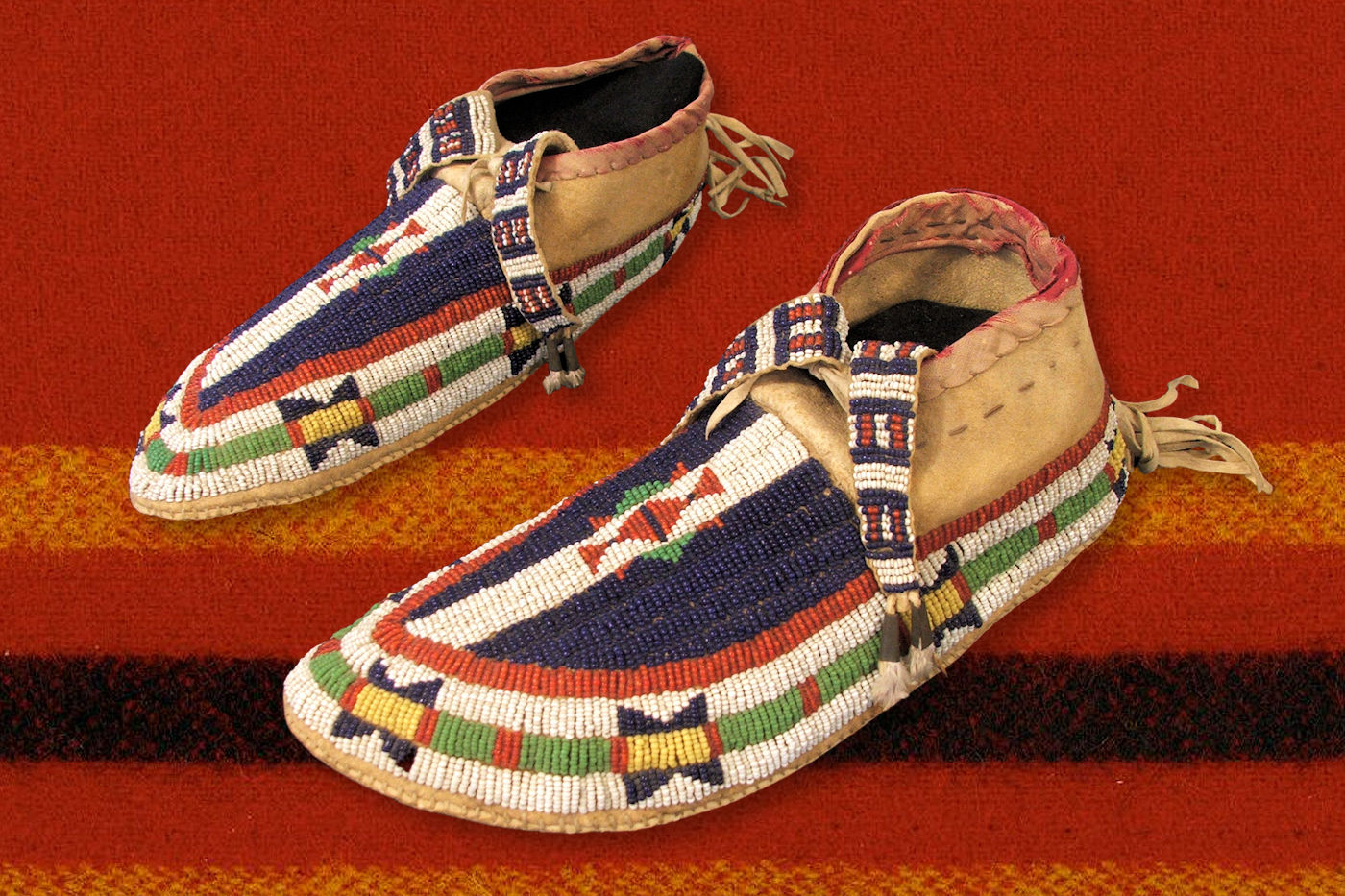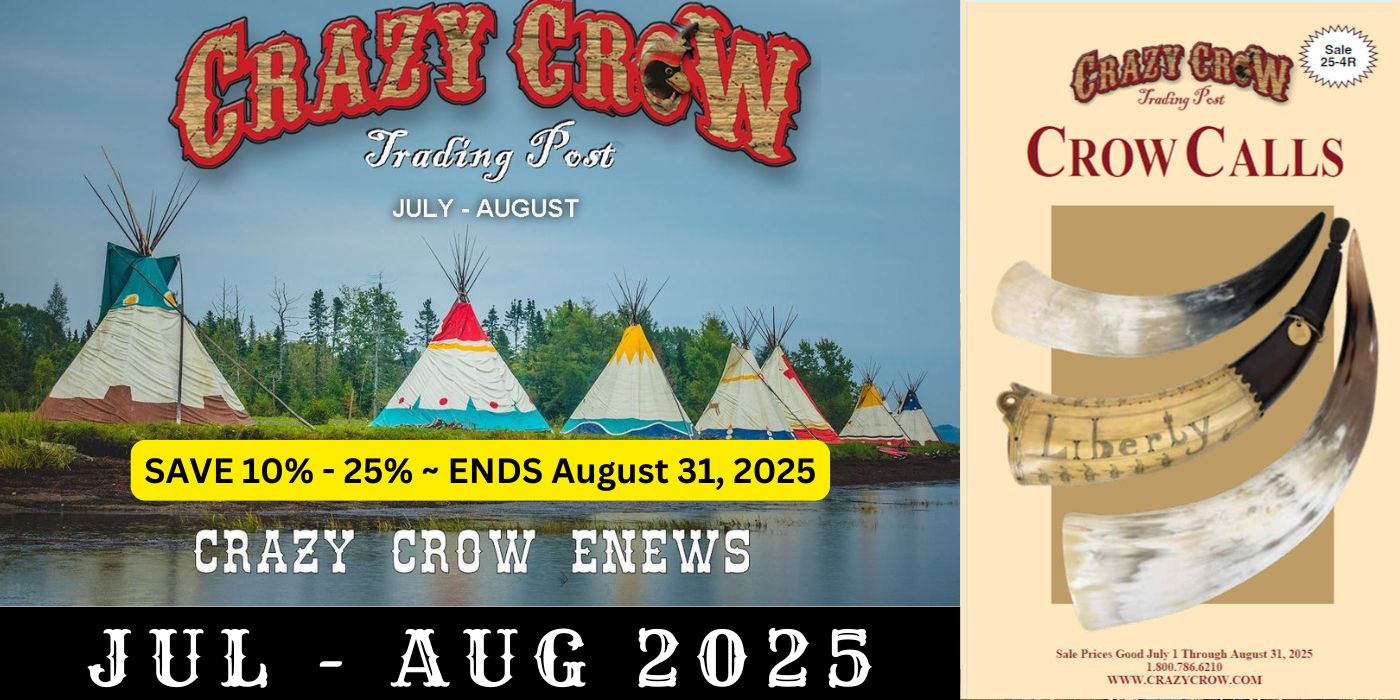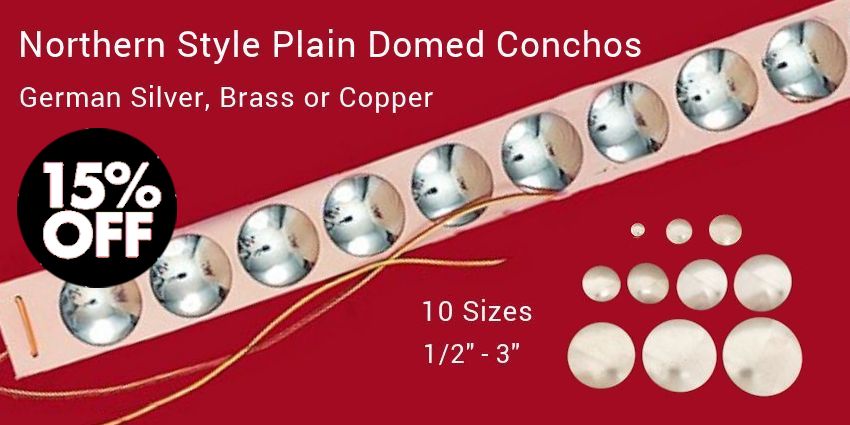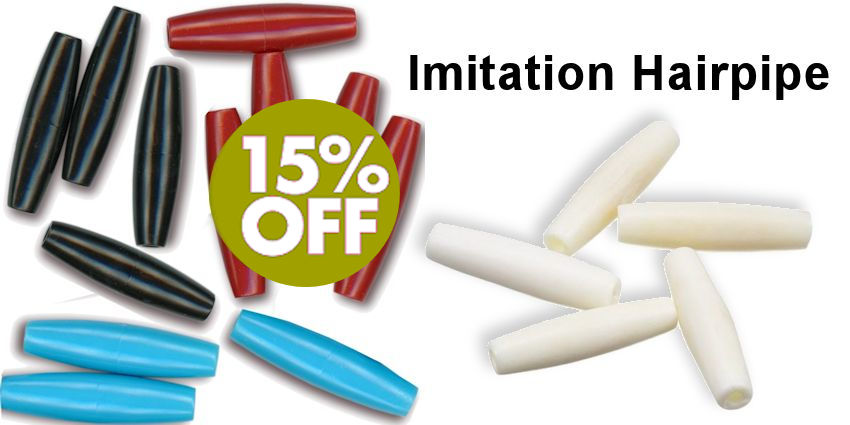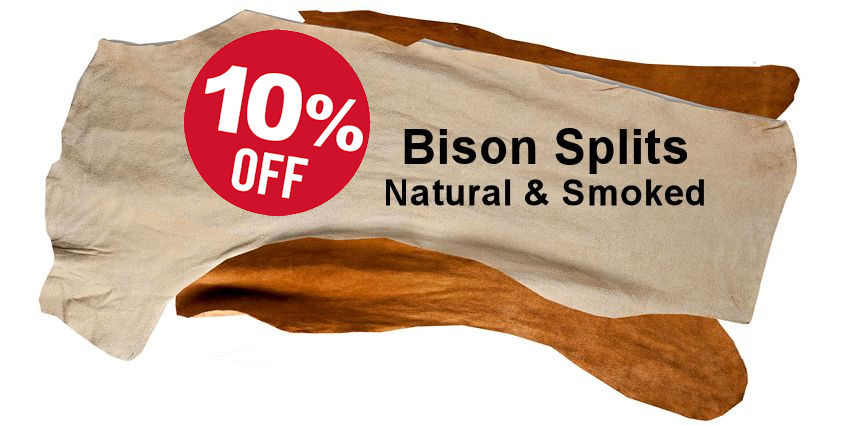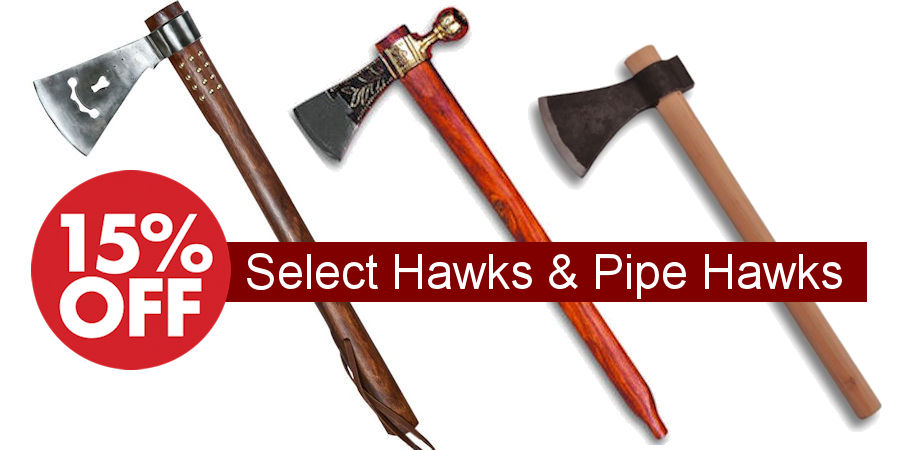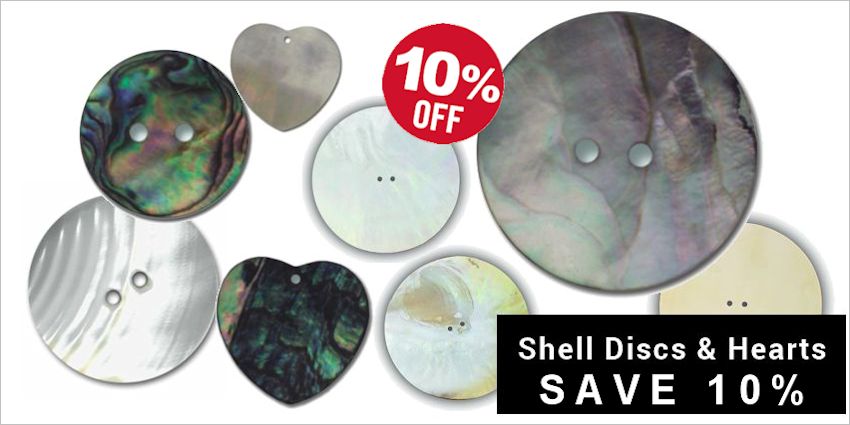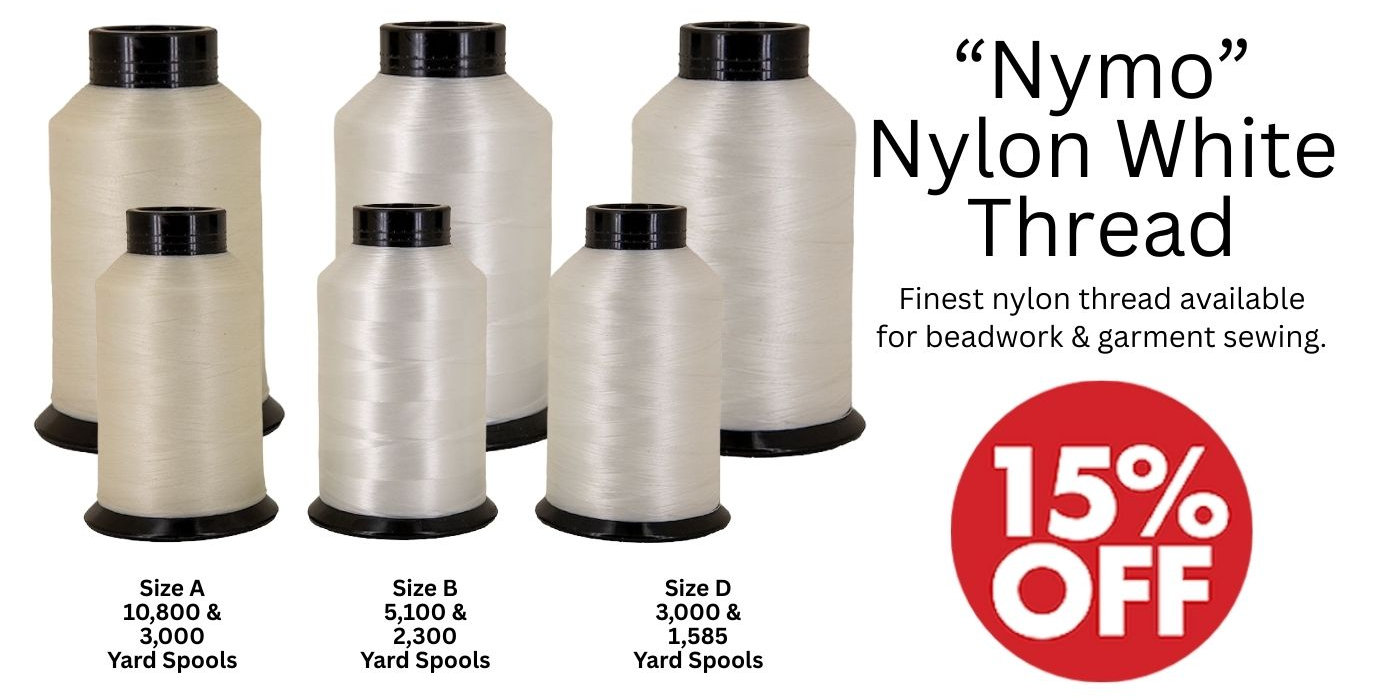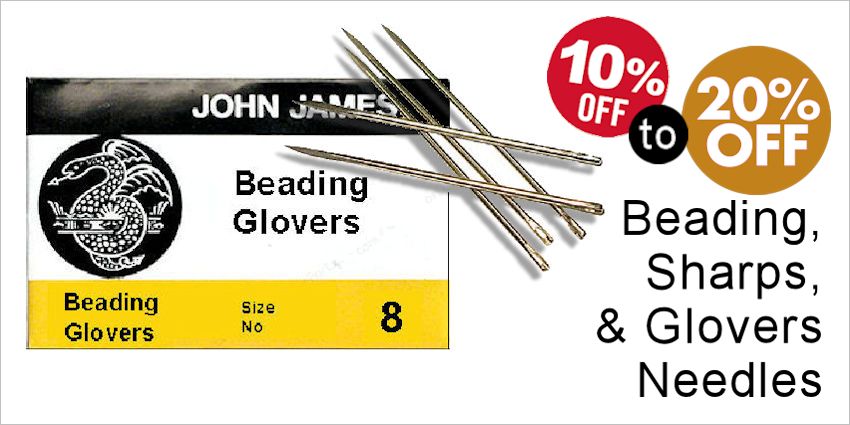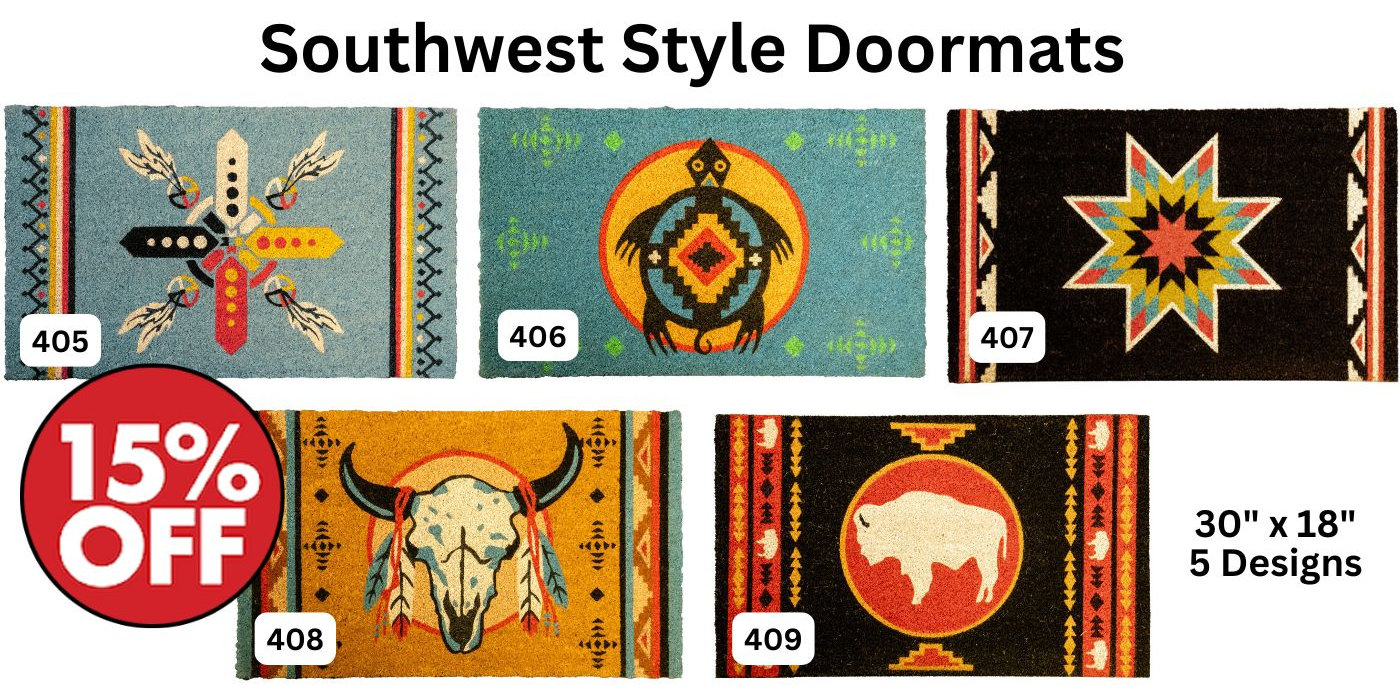

HOW TO MAKE MOCCASINS
Ready-Made Moccasins • Moccasin Making Books & Videos
Moccasin Kits • Moccasin Making Supplies • Online Resources
HOW TO MAKE MOCCASINS
Ready-Made Moccasins • Moccasin Making Books & Videos Moccasin Kits • Moccasin Making Supplies • Online Resources
Crazy Crow Trading Post Craft Focus Article
How To Make Moccasins ~ What are you looking for?
Welcome to one of the most popular “Moccasin” pages on the Web! This page will introduce you to “everything moccasin” that Crazy Crow Trading Post offers. From ready made moccasins, to moccasin kits and patterns, books and videos about moccasin making, and everything you’ll need to make them, and information on the history and origins of moccasins, including a photo gallery and links to other online resources, it’s all here on the Crazy Crow Trading Post website.
The point of this page is to be a focal point for folks that find us through any number of internet searches. We want to make sure that, whatever your reason for looking for “native american moccasins” online, that you’ll find it here and follow other links to the products or information you’re looking for, whether on our website, or some other we link to.
An Introduction to Native American Moccasins
Moccasins are the footwear most often associated with traditional North American footwear. Depending on location and available materials, other types of footwear were also worn: woven sandals, boots, and leggings attached to shoes. The origins of moccasins undoubtedly originate in climates and conditions that made it necessary to make protective footwear. Wearing moccasins or boots would have been essential to keep feet from freezing. In warm weather and mild surroundings, protective footwear would be less important and people could easily go barefoot.
Why do we call this footwear “Moccasins”?
Ultimately, the word “moccasin” came to identify the leather footwear of most of the Indian people of North American due to the circumstances of earliest contacts between white settlers along the New England coast and their nearest native neighbors. The word moccasin moccasin derives from the Algonquian language Powhatan word makasin and from the Proto-Algonquian word “maxkeseni” (shoe). “Moccasin” traditionally referred to a shoe with a puckered u-shaped “vamp” over the instep. The name of the Great Lakes Ojibway tribe means “people of the puckered moccasin”. The southern New England Narragansett word for shoe is “Mocussinass” or “Mockussinchass”. Today the word moccasin, known by a variety of spellings, generally refers to all types of hard and soft soled shoe styles, with and without puckered toes, originating with Native Americans.
Moccasins Fit the Foot, and the Environment!
Hard Soled Moccasins
Native American moccasin styles, how they were designed, and the materials used to make them, were the result of their specific environment. Hard-sole moccasins always made in rights and lefts, and usually made from two or more pieces of hide, are associated with the western plains and deserts areas. The thick, hard sole of shaped rawhide and fitted leather upper required more tailoring than other types of moccasins. Hard-soled moccasins protect feet from harsh cactus or prairie-grass covered ground or sharp rocks.
Soft Soled Moccasins
Soft-soled moccasins, often made from a single piece of leather, were common in the Eastern Forests and were made by bringing up the sole of the shoe around the foot and puckering or patching the material around the instep. Soft-soled center seam and pucker-toe moccasins were especially well suited to travel through woodlands with leaf and pine-needle covered ground. Some soft-soled moccasins from the Plains and Northwest Coast were made from one piece, but they were sewed along one the side of the foot rather than the center.
The most basic form of soft-sole moccasin was the simple center seam made from a single piece of soft-tanned leather. The leather sides were brought up from the bottom and around the sides of the foot sewn in a central seam starting with a puckered stitch at the toe and running along the upper instep. Variations of this soft-sole moccasin construction include a u-shaped piece of leather, added as a vamp, while another piece was added to the back of the moccasin to serve as a cuff.
Some of the Great Lakes and Iroquois tribes used a wide vamp, added in a gathered fashion to cover most of the upper front of the moccasin. Other Eastern Forest tribes constructed their footwear with a shorter or narrower vamp that sometimes joined a central puckered seam running down the upper front to the toe.
Tribal Variations in Design & Decoration
Tribal differences in moccasin design and decoration could literally be said to begin from ground up! So distinctive are some moccasin styles that you could tell the tribe of the wearer by his footprints. Moccasins were made with all types of variations and additions according to the styles of different tribes. Flaps of leather or fur were often added to cover the ankle, or folded down as a cuff. Some moccasins were made into a boot simply by attaching them to the leggings. Various sized u-shaped or elliptical pieces of leather, called vamps or insets, were added to the moccasin upper at the instep. A tongue for hard and soft-soled moccasins was often added and cut into various forms and decorated.
Many methods were used to pucker the toes of woodland center-seam moccasins. A distinctive “rabbit nose” or “partridge” moccasins could be sewed by trimming the pattern first into a “w” shape. There were also many ways to finish the heels of moccasins. Varieties of Eastern Woodland moccasins often left a tiny tab, or tail, trimmed to different shapes, that dragged behind. Other one-piece moccasins have no tail, or the tab is sewn up to the heel for added reinforcement. Some moccasins of the plains and prairie had fringe hanging at the heel seam or added onto the instep; as fringe trailed behind the walker, it may have helped to obliterate footprints.
Even where moccasin construction techniques are similar among tribes, the quilled (and later beaded) decoration was usually quite distinctive. Woodland moccasins were often decorated in floral or zoomorphic (animal) designs, on the instep or tongue portion, woodland decoration did not usually cover the sides of the moccasin. The flap or added cuff around the ankle was also often decorated, or worn upright and held in place by thongs wrapped around the ankle. A separate beaded or quilled piece of velvet or leather was sometimes sewn on top of the cuff or tongue portion. These decorated panels could be easily removed from the moccasins when the soles wore out, and sewn onto a new pair. Plains moccasins often left the cuff undecorated, but geometric bead and quillwork patterns often decorated the instep portion, or around the circumference near the sole. Some Plains designs covered the entire top of the moccasin from the heel to the toe. Moccasins worn for marraige were often completely covered in beads. For Plains peoples preparedness in the afterlife, many moccasins worn into burial were fully beaded even on the bottom of the soles.
Moccasin Construction: Picking the Right Leather
Moccasins were usually made from the soft tanned hides of deer, moose, elk or buffalo. Rawhide was used for the bottoms of hard-soled moccasins. Hides from the larger animals were much thicker than buckskin. Thicker hides were more difficult to sew, but produced sturdier, longer lasting moccasins. Sewing is easier with soft Indian-tanned (or brain-tanned) leather, but commercially sueded and split leather (more commmon by far today) is also suitable for moccasin making.
Commercial leather is most like brain tanned leather when it is split (sueded on both sides), as the smooth outside of the hide has been split off. Leather thickness is measured by the weight in ounces of a square foot of leather. Very thin garment leathers, 1-2 oz. weight, is usually too thin for practical moccasins, while heavy leathers, 5-6 oz. weight, can be nearly impossible to sew by hand. Medium thickness leather (3-4 oz. weight) is recommended for most soft-soled moccasins. Patterns should be laid out on the hide so the pieces go with the grain of the leather, so the moccasins will be uniform. You can conserve leather by laying out the pieces to be cut from the hide in more effiecient space-saving locations, but since the leather stretches in different directions, sewing can become a little irregular if the grain direction is ignored.
Stitching Methods
Moccasins are assembled inside out to hide the stitching in the finished footwear. Traditional sewing would be done with animal sinew through holes punched with an awl. For comfort, knots were kept on the outside of a shoe. The whip stitch was commonly used in moccasin construction, often with an added narrow welt running the length of the seam to make it stronger and to help hide the stitching when turned right side out. The running stitch was also used in places where the whip stitch was not as practical (adding fringe, etc.). Seams were often gently pounded flat in puckered areas.
Moccasins Gallery
Helpful Moccasin-Related Links
Video: How to Make Side Seam Moccasins
This is a step by step video of how to make a pair of Side Seam Moccasins. Example uses cow hide, suede and lines them with natural colored, sheared, beaver fur. These moccasins should be water resistant because of the contact cement used between the suede sole and beaver pelt.
Making Center-Seam, Pucker-Top Moccasins By Talon Silverhorn. Step-by-step illustrated instructions.
How to make one-piece Soft Sole Moccasins in Tutorial Section Forum
This tutorial provides instruction for making one-piece hightop moccasins. While the focus is on a featured pair of moccasins, there are bviously many other styles, many teachers, and many books from which to draw inspiration and instruction. The degree of detail provided is with the beginner in mind. If you have some experience you will be able to skim over much of it. This is the first of five parts.
Wilderness Survival Skills and Bushcraft Antics: Moccasin Making
Moccasin boot hybrids – old meets new (traditional buckskin woodland footwear, with a modern twist.
How to Make Moccasins and Mukluks
How to make a pair of woodlands style moccasins with fur trim. A free pattern is available in a woman’s size 7 (as a PDF file – you will need Acrobat to view).
Instructions for One-Piece, Soft-Sole, Center-Seam Moccasins
Native Tech: Step-by-step instructions for making your own paper pattern and one-piece, soft-sole, center-seam moccasins.
Arapaho Moccasins
From the Museum and Research Center of the American Mountain Men: Article from Tomahawk & Long Rifle. Detailed sketches and description of moccasins, circa 1900.
Judy Kavanagh’s Moccasins Collection Gallery
Moccasins from her personal collection, mostly soft-sole, Woodlands. Other galleries are available on this website as well, including Plains moccasins and mukluks.
M A T E R I A L S & S U P P L I E S
Your Source For Native American Moccasins & Moccasin Making Craft Supplies
Crazy Crow Trading Post has long been your number one source for Native American Indian craft supplies for your Pow Wow regalia and other needs. This photo gallery represents and article represent moccasins of all regions and tribal origins. It, like many of the articles and galleries we add to the website are works in progress. If you find something that needs correction, or have something to add, either as narrative or photos and video, we appreciate your contribution. We cannot guarantee that anything submitted will be included, but it will be reviewed carefully.
Click any link below to view detailed product and ordering information.
Leather for Moccasin Uppers
- Buckskin – Commercial Tan – white, gold, willow; sizes from 4-6 sf – 14-16 sf
- Smoked German-Tan Buckskin – best quality for moccasins & clothes
- Elk Hides – white, gold; sizes from 10-13 sf – 16-19 sf
- Cowhide – various types & grades; good substitute for more expensive deer & elk
Leather for Moccasin Soles
- Moccasin Soles: White Latigo – heavy leather, approx 1/4″ thick; tough & long wearing
- White Latigo Sides – avg size 20-22 sf; great idea if doing lots of mocs
Needles • Thread • Lacing
- Glovers Needles – heavy needles with sharp triangular edges for sewing hides
- Sharps Needles – short, stiff needles best suited for lazy stich or applique beading
- Genuine Sinew – clean & ready for use in craft projects – the ‘original’ thread!
- Simulated Sinew – excellent substitute for the real thing, extremely strong
Seed Beads
- Czech Seed Beads
- French Old Time Seed Beads
- French Seed Beads
- German Old Time Seed Beads
- Italian Seed Beads
Cones: Tin, Aluminum, Copper, Brass
- Genuine Tin Cones – sizes: ¾”, 1″, 1-1/8″, 1¼”
- Aluminum Cones – sizes: ¾”, 1″, 1-1/8″, 1¼”
- Brass Cones – sizes: ¾”, 1″, 1-1/8″, 1¼”
Tools
- Scissors – assorted styles, high carbon stainless scissors make cutting leather
- Bead Graph Paper – developed by Crazy Crow for lazy stitch used on moccasins
Other Featured Products
- Book Preview: Native American Moccasins – Frank White (2014 Edition, due January 2014)
- Moccasin Making DVD – Frank White
- How to Make Moccasins – Plains Indian Hard Sole (DVD)
- Indian Lore Seminar Series – CHEYENNE MOCCASIN CHARACTERISTICS DVD
- Indian Lore Seminar Series – MOCCASIN CONSTRUCTION TECHNIQUES DVD
- Beaded Moccasin Tops
Tags: Indian Moccasins, Moccasin Patterns, Moccasin Kits, Leather Moccasins, Tall moccasins, Indian Footwear, Native American Footwear, Hi Top Moccasins, Native American Moccasins, How to Make Moccasins
Crazy Crow Articles
Current Crow Calls Sale
July – August
SAVE 10%-25% on on popular powwow, rendezvous, historic reenactor, bead & leather crafter supplies. It’s official . . . Summer is now here, and so is the heart of Powwow and Rendezvous & Historic Reenactment seasons. Fourth of July Celebrations are here, and just blink and Labor Day will be here. This sale offers many popular items for both Native American, Rendezvous & Historic Reenactment outfits. Sale items include our Missouri River Brand Serape Blankets, a big DVD sale, Missouri River Patterns, 18th Century Linen Hunting Shirts, select Damascus Knives, Buckskin Splits, Fluted Hairpipe, Horn Hairpipe, Plastic Crow Beads, Leather Pouches & Bags, and much more.
We are in the process of updating the right column promo items. This takes a few hours & should be done before the end of today. You will know they are done when this message has been removed.

